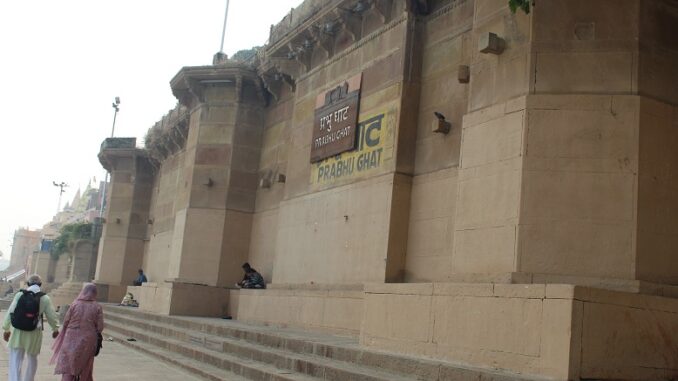
First destination of my Nov-Dec 2023 Ganga walks was the Varanasi Ganga ghats. Though I had visited Varanasi twice before but did not explore each Ganga ghat then. This time I walked all Ganga ghats to feel the cultural, historical and spiritual rhythm of the ancient 84 ghats.
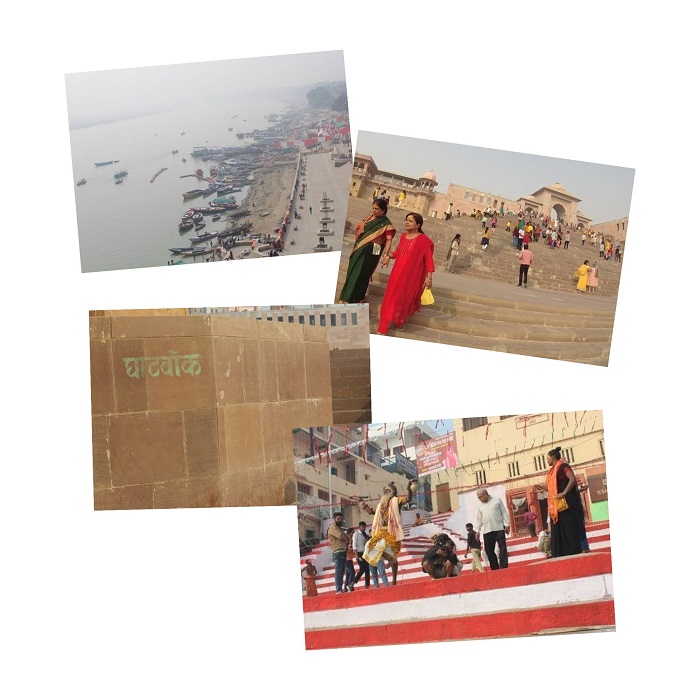
Evening arti at Varanasi Ganga ghats is a divine experience. I was privileged to perform arti at Assi Ghat.

With magnificent edifices towering over ghats and the quaint alleys behind flanked by havelis, temples, akharas, kunds, ashrams, Ganga ghats of Varanasi amply depict the cultural and religious traditions of Varanasi. Forming the eastern edge of Varanasi, the 6.5 km long riverfront of the sacred river Ganga with 84 Ganga ghats presents the unique history and the vision of a marvelous architectural row of lofty buildings and holy sites with the Ganga ghats inextricably linked to the structures above them. The history with reference to water-front sacred spots dates back to around 8th century, however, the construction of the stone stepped ghats began in 14th century. Most of the Ganga ghats are active spots for festivities and rituals, a continuing tradition since ancient times. Though the Ganga ghats were built in different historical times, yet all feature with 60 to 90 steps, thus giving the feel of a continuous stretch of stairs.
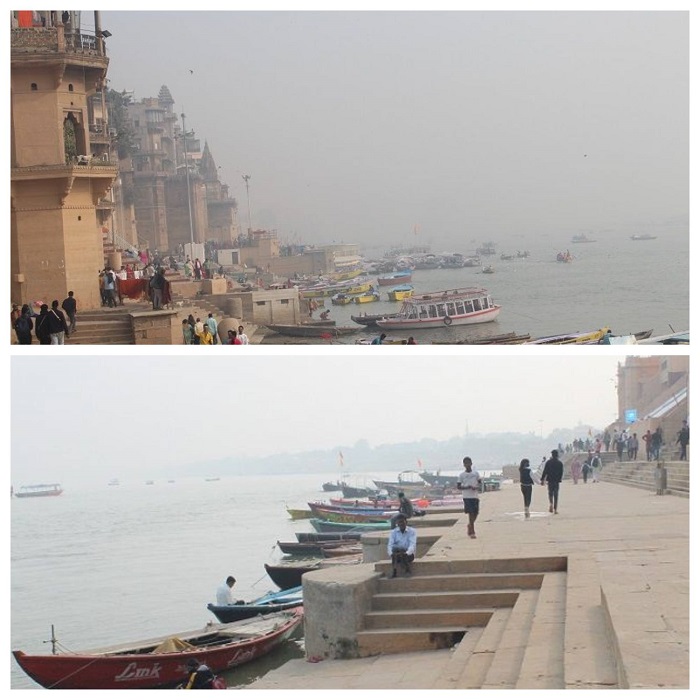
Ghats, the steps leading to the river bank, are marked by octagonal raised platforms built for public use and smaller rectangular platforms, that are closer to the river, built for the use of Brahmins for religious rituals.

Varanasi Ganga ghats are the place of numerous activities, ranging from the everyday uses to spiritual elements including immersion, rituals and cremation.
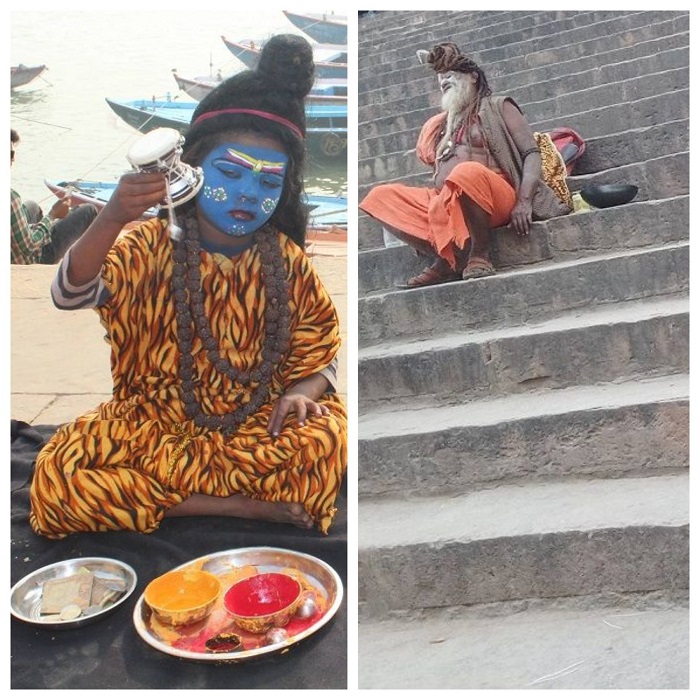
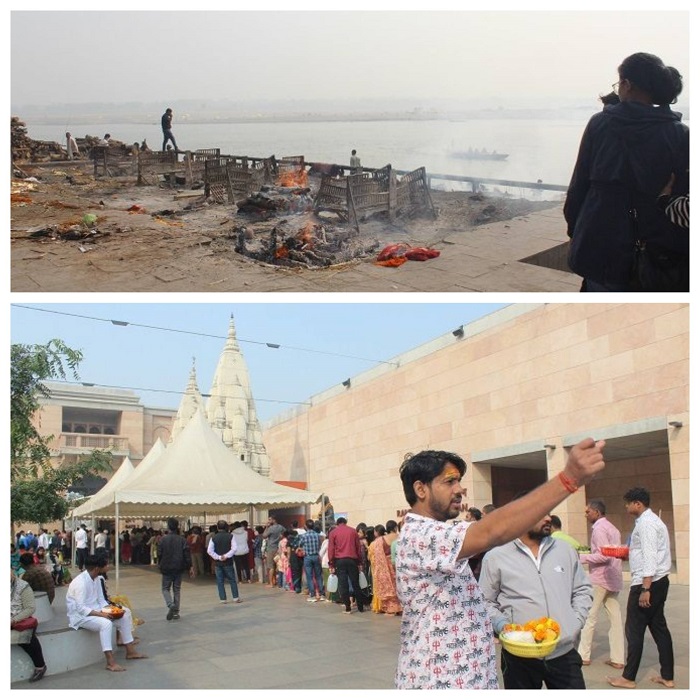
The palatial buildings along the ghats were mostly built under the patronage of the Marathas during the 18th and19th centuries. Between the late 18th and 20th century, many ashrams, Sanskrit schools, temples and dharamshalas were also built, patronised by rulers of different parts of India, thus portraying the architectural vocabulary of various sections of the country. The use of Sanskrit language and Vedic chanting even today exemplifies the rich and diverse practices still in existence.
The entire river bed of Ganga in Varanasi is a distinct example of natural heritage. The unique directional change of the river course led to the development of the ancient city, then known as Kashi. The sudden northward turn of the river at this location symbolises the life cycle from death to life. It is believed that by taking holy dip in River Ganga at the ghats, the individual soul can get purified. The old city grew into a semicircular form along the flowing Ganga due to a unique geological formation. The crescent shape is symbolically described as a crescent moon on Lord Shiva’s forehead. Varanasi Ganga ghats are included in the tentative list of UNESCO World Heritage Sites, justifying their outstanding universal significance. Source: https://whc.unesco.org/en/tentativelists/6526/

What an amazing trip, I do love visiting places with history and learning the culture as well
Incredible trip.
I would love to see this in person and really experience it. It sounds like an amazing time.
Amazing experience indeed.
The trip sounds like a good experience. I enjoy looking at your photos as you capture the moments well.
Thank you Lisa.
The Ganga ghats looks like such a great river walk with so much to see along the way!
Truly so.
It sounds like an incredible trip. Thank you for sharing about your experiences.
Incredible indeed.
This is an amazing trip. I am interested in their culture, and I want to experience all these things.
Memorable experience indeed.
I bet this was such an amazing place to experience. Always so interesting to find out about places I’ve never visited x
Indeed so.
Your vivid description of Varanasi’s Ganga ghats is truly captivating! The rich cultural and religious tapestry, with magnificent edifices and historic structures, paints a mesmerizing picture. Learning about the continuity of traditions and festivities at these sacred spots since ancient times adds a profound depth to the experience. The architectural legacy of the stone stepped ghats is fascinating. Thanks for taking us on a journey through the remarkable history and beauty of Varanasi’s riverfront.
Thank you. Glad you enjoyed post.
What an incredible place! There’s so much to see and discover..the cultural immersion is amazing. I would love to visit!
Truly so Tammy.
It sounds like you had an amazing trip. I’d love to go and visit someday.
Amazing trip indeed.
The evening arti at Assi Ghat sounds absolutely divine, and I can only imagine the serene atmosphere.
Absolutely divine.
It must be an amazing experience over there. All the clicks are so lovely
Thank you Khush.
This place does feel like it’s full of natural heritage! what an interesting part of the world to explore.
So rich in history.
It sounds like you had an amazing experience visiting the Varanasi ganga ghats on your trip.
Indeed amazing.